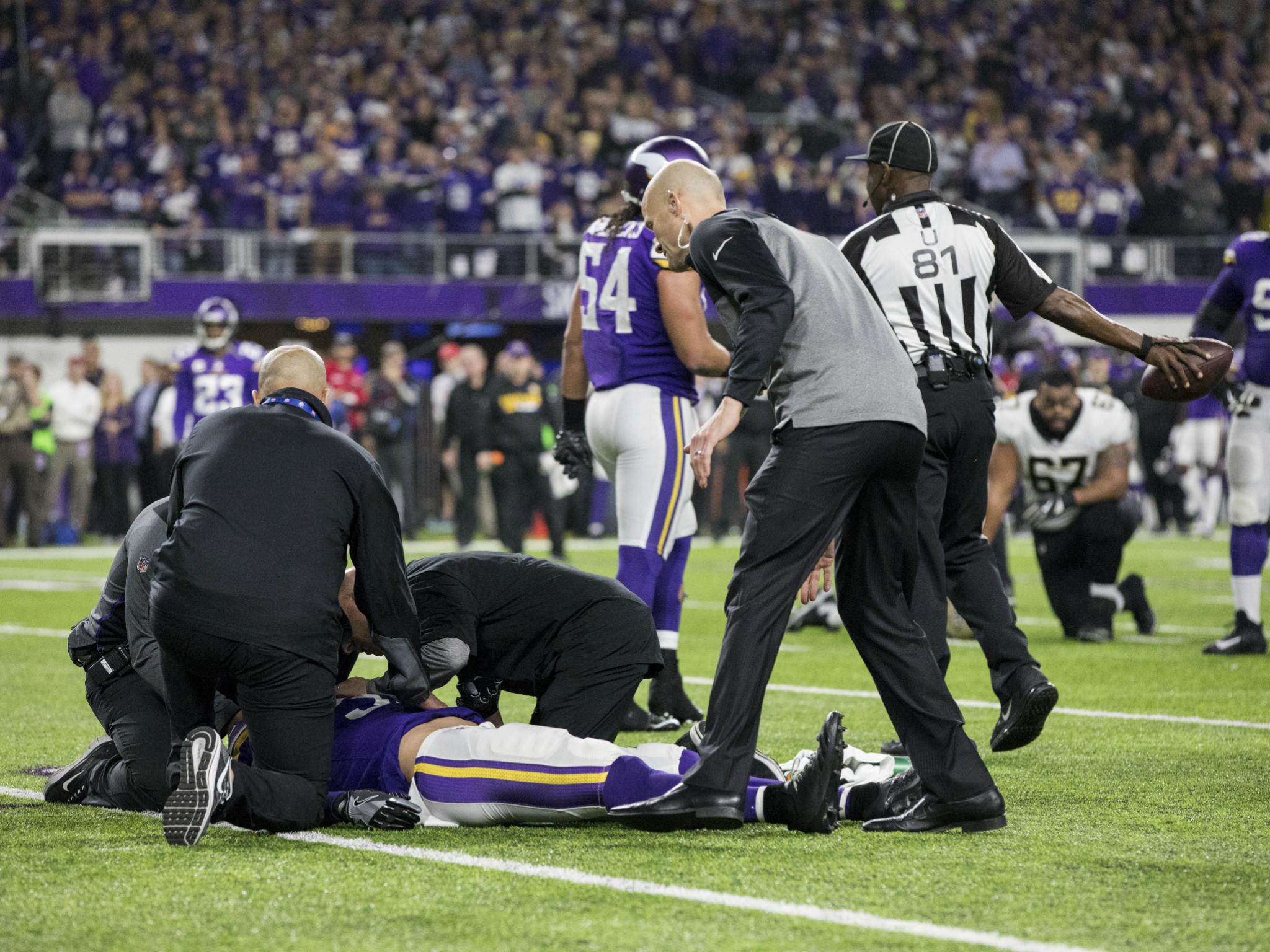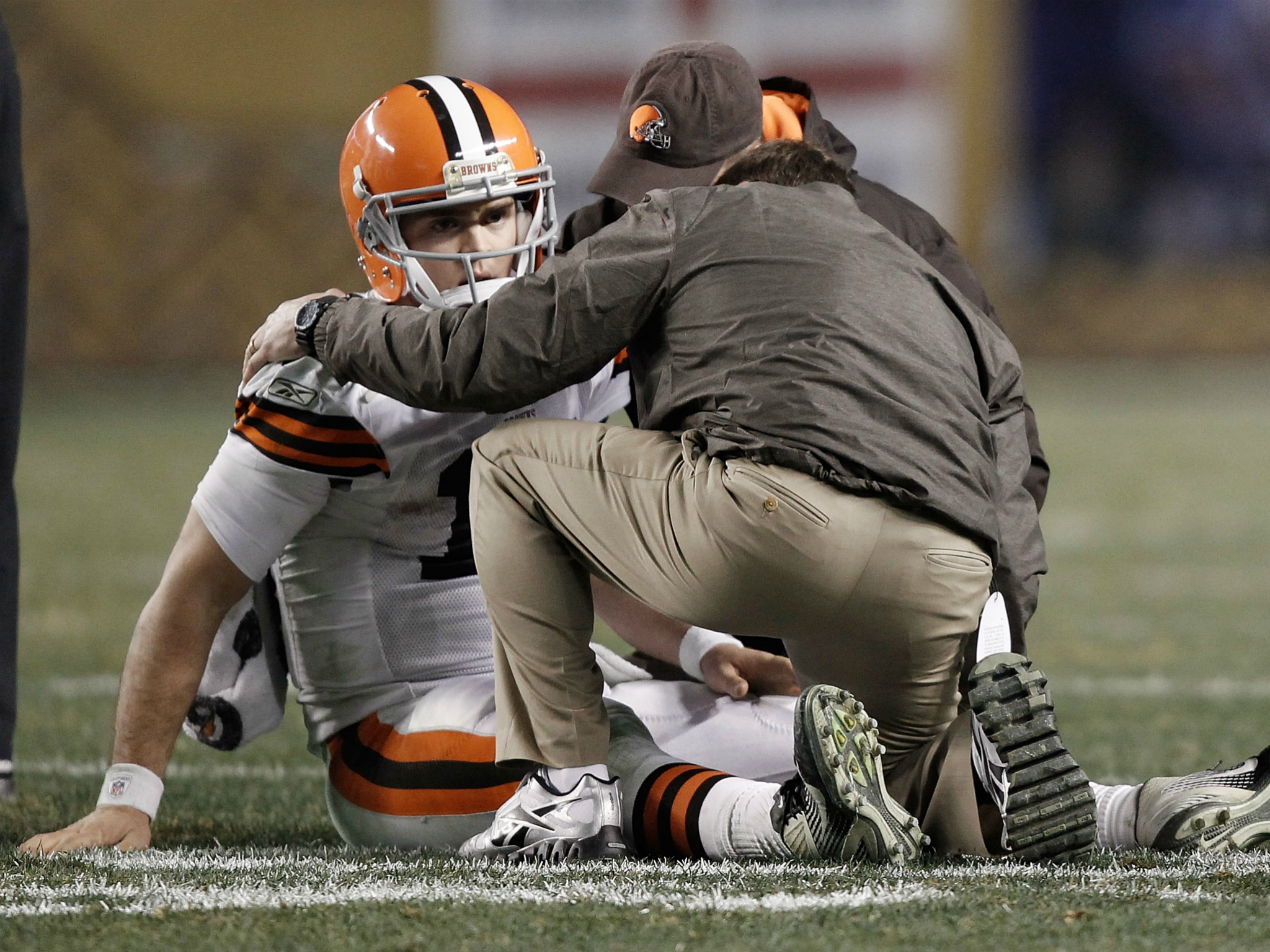Rubber-skinned mannequins and banning helmet-led tackles: The NFL embraces health and safety at Wembley
A raft of new medical protocols will be in place when the Seattle Seahawks take on the Oakland Raiders on Sunday

Your support helps us to tell the story
From reproductive rights to climate change to Big Tech, The Independent is on the ground when the story is developing. Whether it's investigating the financials of Elon Musk's pro-Trump PAC or producing our latest documentary, 'The A Word', which shines a light on the American women fighting for reproductive rights, we know how important it is to parse out the facts from the messaging.
At such a critical moment in US history, we need reporters on the ground. Your donation allows us to keep sending journalists to speak to both sides of the story.
The Independent is trusted by Americans across the entire political spectrum. And unlike many other quality news outlets, we choose not to lock Americans out of our reporting and analysis with paywalls. We believe quality journalism should be available to everyone, paid for by those who can afford it.
Your support makes all the difference.Underneath Wembley Stadium, in the corridor of a functional triage centre, lies a rubber-skinned medical mannequin on a gurney. Just a few metres away on Sunday, the Seattle Seahawks and the Oakland Raiders will be engaged in an NFL game in front of thousands of fans, but any tackle delivered too squarely could land a player in this brightly-lit emergency room filled with latex gloves, an airway-clearing kit and a state-of-the-art X-ray machine.
As much as sports fans would prefer to focus on the dramatics on the field, the NFL itself has been gripped by two competing aims; to maximise the popularity of a sport that exists for the vicarious thrill of bodies colliding at top speed, and to mitigate the very real damage such interactions cause to the men who play the game.
This season, where new rules have led to some unpopular roughing the passer calls and restrictions on how players can use their helmets in tackling, has exposed how difficult that balancing act can be.
“I can just say from my year in working with the NFL that there has been no resistance in improving the game in regard to safety,” said NFL Chief Medical Officer Allen Sills. “When I was hired the commissioner said to me, ‘Our number one priority is the health and safety of our players and we want you to help us get that right’.”

So when Sills, who was hired last year, examined game film and presented some disturbing findings to the competition committee, the NFL supported his conclusion even though it meant instituting an unpopular rule. It is now illegal for a player to lower his helmet and use that to initiate contact with an opponent.
“They didn’t say, ‘We want to study this or maybe look at it for a year’, they immediately said, ‘This is something we need to act on because this style of play leads to injury’,” Sills added.
His team is collecting data on whether the new rule has affected the style of play but it is too early to draw conclusions.
Concussions are the most prominent health issue for the NFL, which for years has been negotiating a settlement to a lawsuit brought by former players who are suffering the possible effects of too many concussions. As of July, $500 million in player claims had been approved. This is an injury that can be debilitating, and one that the league was so slow to admit could be caused by football that it arguably mitigated the progress made in addressing it.
But that approach has changed. On a recent afternoon, Sills and NFL health and Safety VP Jeff Miller toured Wembley to discuss fitting an American game into a British stadium, and the revolution the NFL has undergone in its approach to the safety of a collision sport.
Part of that includes additional personnel in place to spot possible concussions, one for each team and one hired by the league to watch for possible head injuries on the field and using the telecast. This role springs from a 2011 James Harrison hit on then-Browns quarterback Colt McCoy, whose head injury – a “significant blow”, according to Miller -- was obvious to those viewing the broadcast but not to the medical personnel on the field. McCoy went back into that game and later said he didn’t remember the hit at all.

Afterwards, fans and the union representing the players were outraged that McCoy played on.
Since then the NFL has implemented new procedures and has brought them across the Atlantic to Wembley. Here, the NFL will have its own medical personnel in addition to each team, and will use physicians from Princess Grace Hospital who are licenced to practice here on the sidelines. The entire medical staff meets together before the game with the referees to go over worst-case scenarios – which trauma centres would a player be sent to for a cardiac event, where the ambulance is located, where all the medical equipment is in the stadium, and other key questions.
Then there are smaller changes. For example, every player taken into the sideline medical tent for a concussion evaluation has to relinquish his helmet to make sure he can’t go back into the game before he is cleared.
Miller said that the NFL has paid dearly to update these protocols – he estimates at least $200 million on research alone. There is also the headset network of those watching for concussions and other injuries, the monitors for staff and referees, and even the time that goes into putting a video for each team of all the possible injuries during the game so staff can follow up with individual players. The league even has an independent evaluation of different helmet models so players can make a more informed choice.
Sills notes that the best way to make the sport safer is to prevent injuries, but in a full contact game played by flesh and blood men that just isn’t possible. So this Sunday, there’ll be space next to the medical training mannequin just in case.
Join our commenting forum
Join thought-provoking conversations, follow other Independent readers and see their replies
Comments